Hair Matters Program FAQS (Hair Mats for Oil Spills)
You shampoo because hair collects oil. We collect hair, fur, fleece and laundry lint to make mats that clean up oil spills.
Learn more about the donation process, mat making, mat purchasing, different uses for hair mats, ways you can get involved, external resources, and more!
Feel free to contact us if you need anything further.
Donating Hair, Fur, Fleece, Fuzz (11 Questions)
How do I donate hair / fur / fleece (including horse, rabbit, different types of pet fur)?
To donate to our Hair Matters program (even for a one-time hair donation), first sign up to our platform TheHumSum.org – Humanity Adding Solutions. We ask you to do this because our cottage-industry factories have limited space, and we try to match donations with the nearest emergency spills.
- We always need ponytails that are 5 inches (12cm) or longer and separated from the short hair (we use these for the scrims – a lacy outer layer we fill in with shorter hair, fur, fleece, etc.).
- We accept all kinds of human hair (unless it’s synthetic); pet fur – both mixes of dog, cat, rabbit… and single; and horse, alpaca, llama, buffalo, and sheep… at least two inches (~5cm) long and free of debris. You can put anything shorter than 2 inches into your garden, flower pots, and window boxes as a nutrient-rich mulch for the soil.
- We only accept hair from the neck up. Underarm hair, bikini-area hair, and dreadlocks (which don’t work with our machines) are great to put around plants like basil, which get attacked by snails. Long hair is good for gardens too, but it should be covered by soil. For mixed lengths: hair brush, shower drain be sure to put topsoil over the hair to save birds from “stringfoot.”
- We are unable to accept wigs or synthetic extensions.
We also need a large database of donors that we can reach out to during emergency oil spills, so thank you for signing up!
Steps to Donating (Posting) on The Hum Sum:
1) Go to TheHumSum.org, and create an account (only takes a few seconds) if you don’t have one. We don’t sell or share any of your private info.
2) Click on the + sign to Donate a Gift
3) In the Title field, enter for example: ponytail or dog fur…
4) Fill out the rest of the form and click Publish
5) You’ll get a message, usually within 72 hours with a mailing address.
What lengths of hair / fiber can I post?
• Ponytails 5+ inches (12cm) and longer – Please put loose hair in an envelope. Please do not secure hair with rubber bands.
• Boxes of clippings (over 2 inch / 5cm) – Most salons and groomers simply reuse shampoo delivery boxes and line them with a garbage bag (ideally compostable). The boxes must be debris free, meaning nothing sharp and no cigarettes, food, metal pins, clips, garbage, etc. Your box’s contents will end up in classrooms, felting machines, and natural habitats (waterways, rivers, oceans). See our video on how to donate hair. Please put a towel or mat on the floor and collect it from there. Please do not sweep off the floor.
• Loose fur, wool, and fleece – Fleece and wool can be any grade. Please make sure there are no nail clippings, vegetation, rocks, or anything hard that could damage the needles of our machines, or we will have to throw away the whole batch. See our videos on how to donate fur and fleece.
• We can provide thank you letters for your donation. Donors also pay for the shipping, which can usually be expensed.
Fleece donors:
Thank you for sending in debris-free fleece clippings for our projects! Please send in cardboard boxes or bags sturdy enough to be shipped.
Please note: it’s very important for fiber to be debris-free because debris can ruin our felting machines. So, please, no leaves, twigs, rocks, dirt, feces, etc. Otherwise we have to discard the whole container.
Every length, color, and type of fleece is welcome!
Please contact us for shipping addresses.
When you post donations on TheHumSum.org, please specify the quantity and unit size of your donations (bags, boxes, pallets, truck loads, etc.).
Check out the other departments on our Free Exchange at TheHumSum.org. The whole program is free and designed to encourage turning waste into useful resources. We link those who have surplus to those who have need, and to reduce carbon emissions from overflowing landfills!
Thanks!
Why can’t you just give me an address?!
Due to the sheer volume of donations from the thousands of generous donors like yourself, we have to manage the volume and direct materials to closest recipients.
Depots are not always open, and we don’t want any boxes returned to donors.
Please sign up to the Free Exchange on our Hum Sum – Humanity Adding Solutions platform and post your gift of hair under the Hair Matters – hair category. Thanks!
What happens to my hair when you get it?
Matter of Trust uses hair/fur/fleece donations in several ways. Fibers are felted into mats on site (or at partner felting sites) or they are stuffed into sheaths such as donated nylon stockings, or burlap coffee bean bags, to make booms. (see manufacturing hair mats page for more information.)
Mats, booms, and loose fibers are being used in research and pilot studies around the world. The mats are used by hazmat teams in oil spill cleanups and by public works departments in storm drain cages to keep motor oil drip spills out of waterways. Booms are best for encircling spills or “sandbagging” a beach to keep sands clean. Natural waste fibers are also used in classroom oil spill clean up demos.
Who first thought of using hair to clean up oil spills?
Phil McCrory, during the Exxon Valdez oil spill in 1989.
See YouTube video: https://www.youtube.com/watch?v=mccG1DdZB3c
Full news article: Register-Herald
Why divert natural fibers from the waste stream?
Hair, fur and fleece soak up oil extremely quickly. So quickly that it is dangerous for wildlife to be near an oil spill, as their fur and feathers get coated in oil before they can escape. We take advantage of the adsorbing properties of these hairs and fibers by felting them into the form of mats and making booms.
What are the properties of hair that help in an oil spill cleanup?
It’s the surface area of the hair – the nooks and crannies along the strands. The oil coats it all. Hair is adsorbent not absorbent. Hair doesn’t swell up like a sponge, instead the oil coats the entire surface area of the hair, and because of the sheer volume, it is a very efficient material.
Do we accept hair that is chemically treated, dyed (including chemical, henna and other natural dyes), permed, or straightened?
Yes.
Does hair have to be washed?
No. Donated hair can be unwashed.
Do we take hair swept up from floor?
Ideally, no. During cut, put down smock for cuts and pull it aside for long hair. We can’t take other kind because of trash/debris.
Is shipping covered?
Matter of Trust is a public charity and is not covering shipping costs, but you do get a donation verification form to use for expenses if a business and in taxes if you itemize.
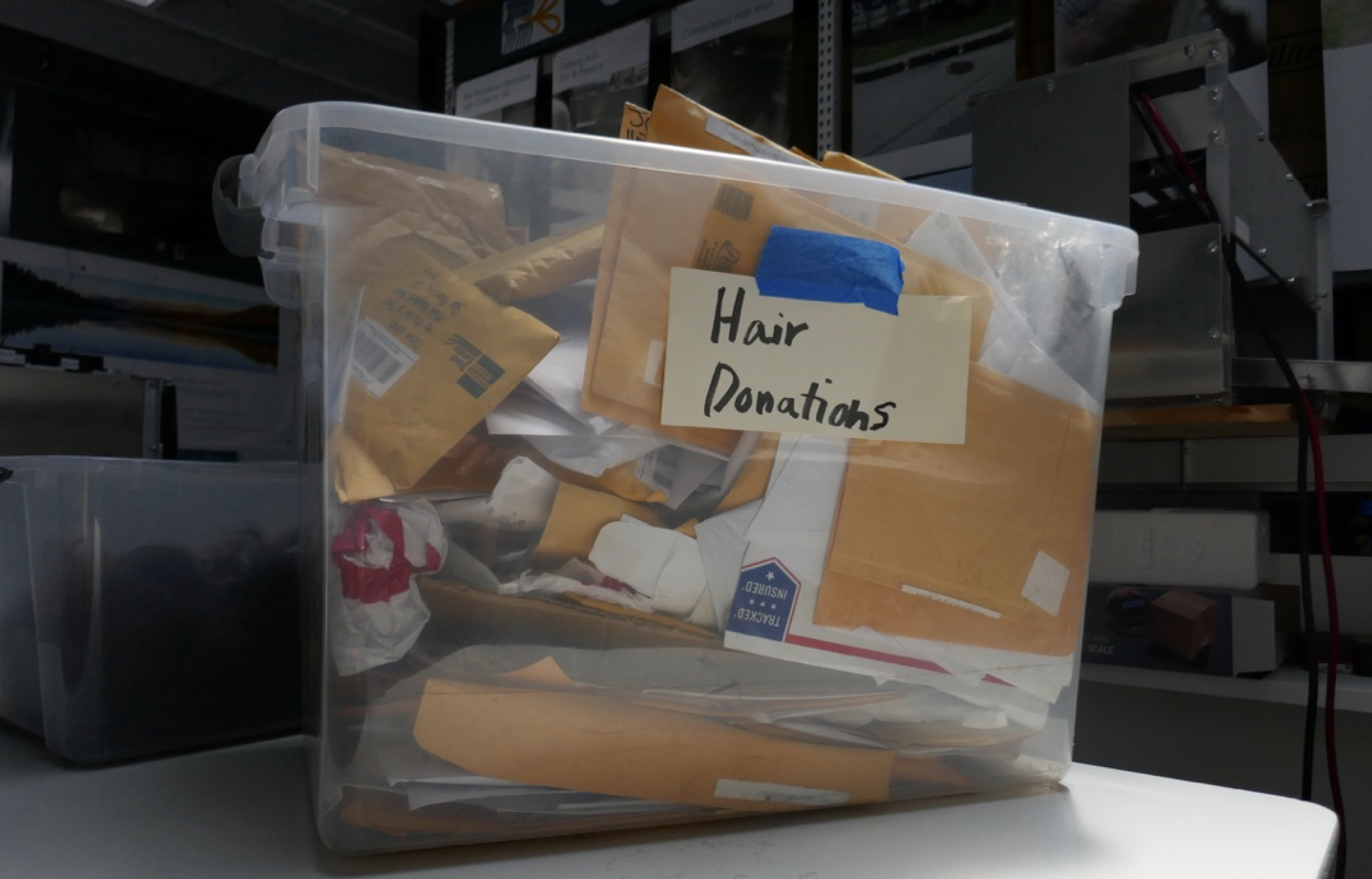

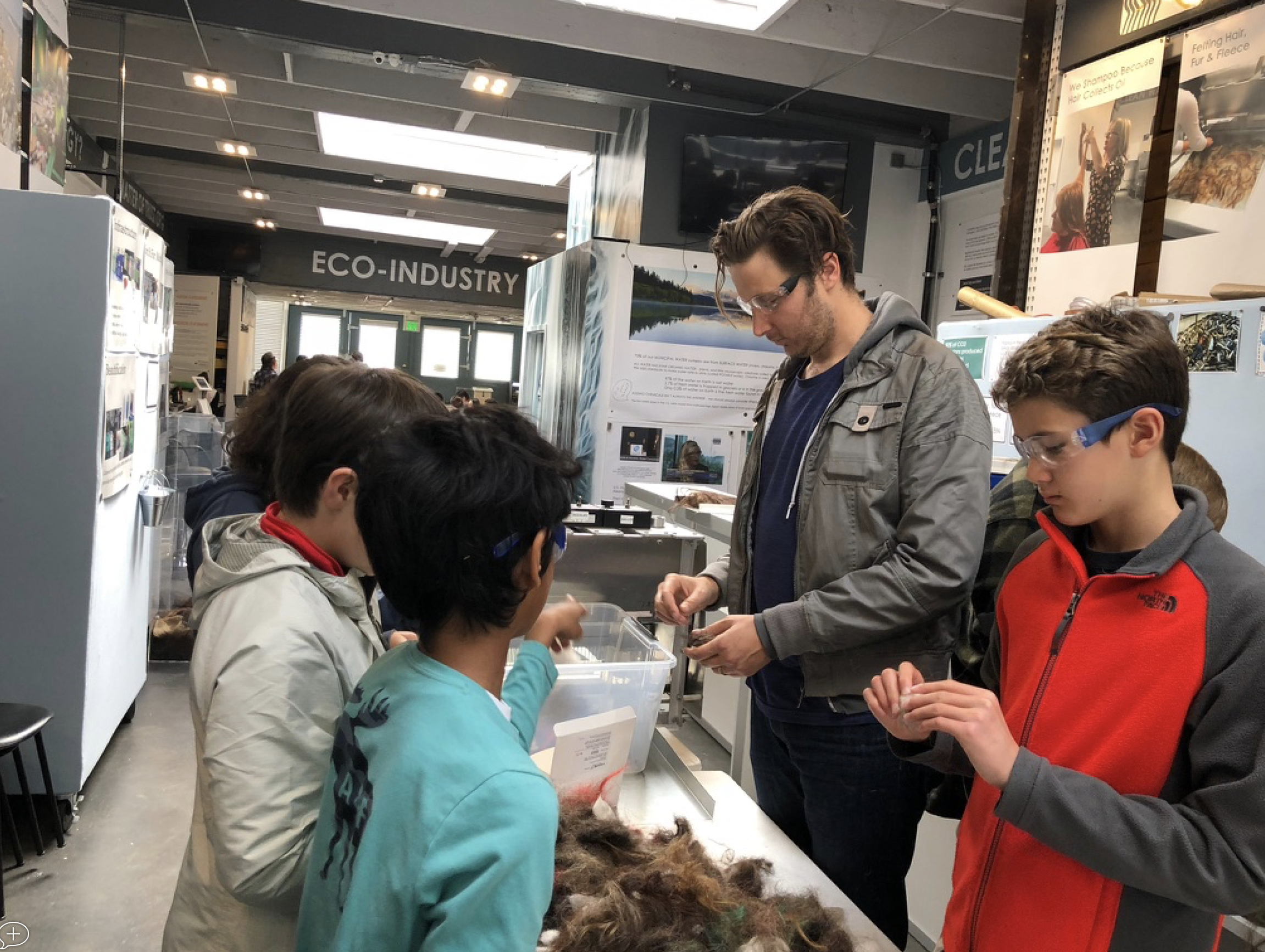
Get Started - Felting Hubs (20 Questions)
How big and heavy is the machine?
The machine is around 91 x 28 x 46cm (35 x 11 x 18 inches) and weighs around 40kg (88 pounds) without the rollers. It can be easily moved by two people.
Which supplies do I need to get started?
The machine comes with a box full of 198 needles. You just need a strong table to work on and a scale. You can reuse bags or boxes for storage.
Which needles do I need to buy later?
Our needles are produced by Groz-Beckert in Germany. You need to contact the local representative of the brand in your country and ask for
653281
15x17x32x3 1/2 R333 g 8002 best for scrims and animal fur
622441
15x16x25x3 1/2 m333 g 3410 best for filler
How much money do I need to start?
You don’t need much money. You just need a place to receive, store, and felt hair, and you need the money for your first couple months of bills.
How much space do I need to start?
We recommend a separate 4 x 4m (13 x 13 feet) room for the production process.
How much space do I need to store hair?
One cubic meter of hair is around 45kg (99 pounds) of hair. When you process it, the hair compacts to less than half of the space, so 1 cubic meter of processed hair is around 150 hair mats, which is about 130 kg (286 pounds) of hair.
When you are working on a medium-sized operation for collecting and felting hair, you will probably need 30 m2 (320 feet2) for stock and received hair.
How many people do I need to hire at the beginning?
In the beginning stages, we recommend you work by yourself, until you bring in enough sales to bring in other people. This should start as a supplement to your income. Later, you can create new jobs after you see consistent mat sales.
How much hair can I receive from a salon?
The average small salon produces about 1.4kg (3 pounds) of hair per month. But you may work with big salons that can give you 12 to 15kg (26 to 33 pounds) of hair per month.
Logistics: How can I start receiving hair?
We recommend that you establish one or more places where people can mail you boxes of hair. You will start receiving hair from all over your country from TheHumSum.org, which will also help you track how much hair is coming in and where it’s coming from.
Also, you can visit salons and ask for hair. We recommend that you ask salons to store hair for a couple of weeks or a month to reduce logistical difficulties and to shrink your carbon footprint.
How much time does it take to separate long and short hair?
On average, you need one hour to separate 6 to 12kg (13 to 26 pounds) of hair. That’s why we ask hair salons to separate long hair (4 to 10 inches or more) from short hair (2.5cm to 10cm / 1 to 4 inches). Shorter hair can be used in gardens.
Where do I store the hair I collect?
You can use recycled cardboard boxes to store hair. You will need to keep it in a dry place.
How much hair do I need for one hair mat?
You need 200g of long hair and 600g of short hair and / or fur and fleece to felt one hair mat.
What is the percentage of long hair?
It varies from 8 to 15%.
How much time do I need to produce a mat?
Normally you need 15 minutes to felt each scrim (you need two scrims to complete a hair mat) and 17 minutes to fill it with short hair. One practiced person can finish in 40 minutes.
How much time do I need to produce a hair boom?
To produce a hair boom of 2.4m (8 feet), two people need 2.5kg (55 pounds) of hair and 15 minutes.
How many mats can I produce in one month?
A dedicated person who receives around 200kg (440 pounds) of hair can produce around 120 hair mats monthly.
I want to quit my job and start working with hair mats. How can I finance the first months?
We do not recommend quitting your job until you are sure your mats have a purchaser in your area. You can start earning money from hair mats by selling them to finance the operation, or you can ask salons for a fee for collecting and treating the hair.
We can also help you create valuable projects for your area or help you find public or private grants.
Where can I sell hair mats?
There are plenty of buyers, depending on how the hair mats are used.
For oil recovery: governmental agencies, city halls, regional agencies, petrol companies, auto shops, and industries using machines with oil leaks, ports, storm drains, etc.
Agriculture: governmental agencies, city halls, regional agencies, farmers, plant nurseries, botanical gardens, people with plants in their houses, socially responsible businesses, etc.
What are the most common salon concerns / objections? How do I approach them?
Salons sometimes have concerns about separating the hair and about the time and space required for that process. A clear container of donated hair helps them keep track of what they’re doing and start eco-conversations in the salon.
Is “hair production” regulated by law?
Regulation varies by country, but usually it relates to wigs and extensions. We are working with donated waste fiber, including fur from pet groomers, fleece from ranchers, and hair from salons. This is comparable to cottage industry wool products.
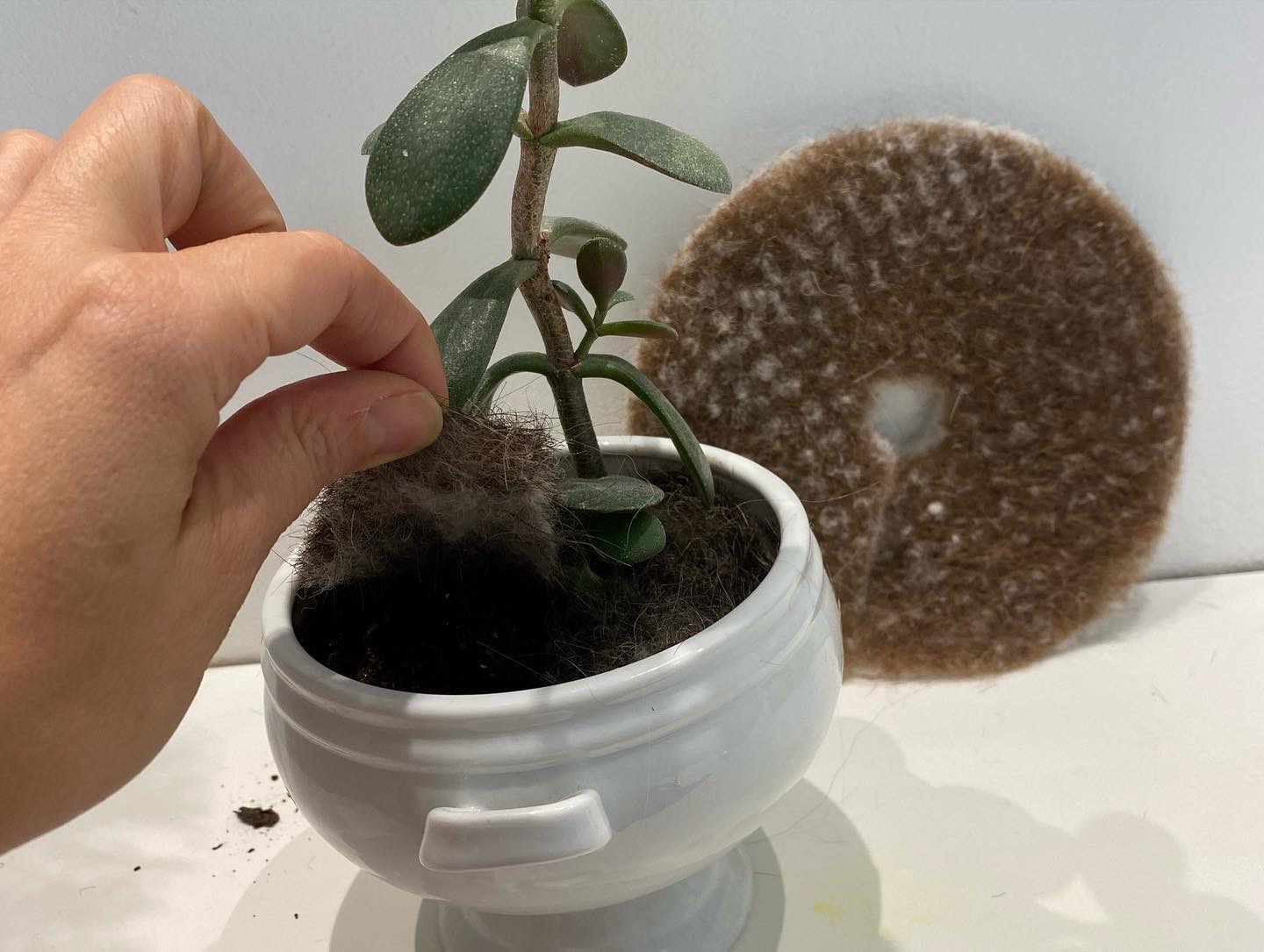

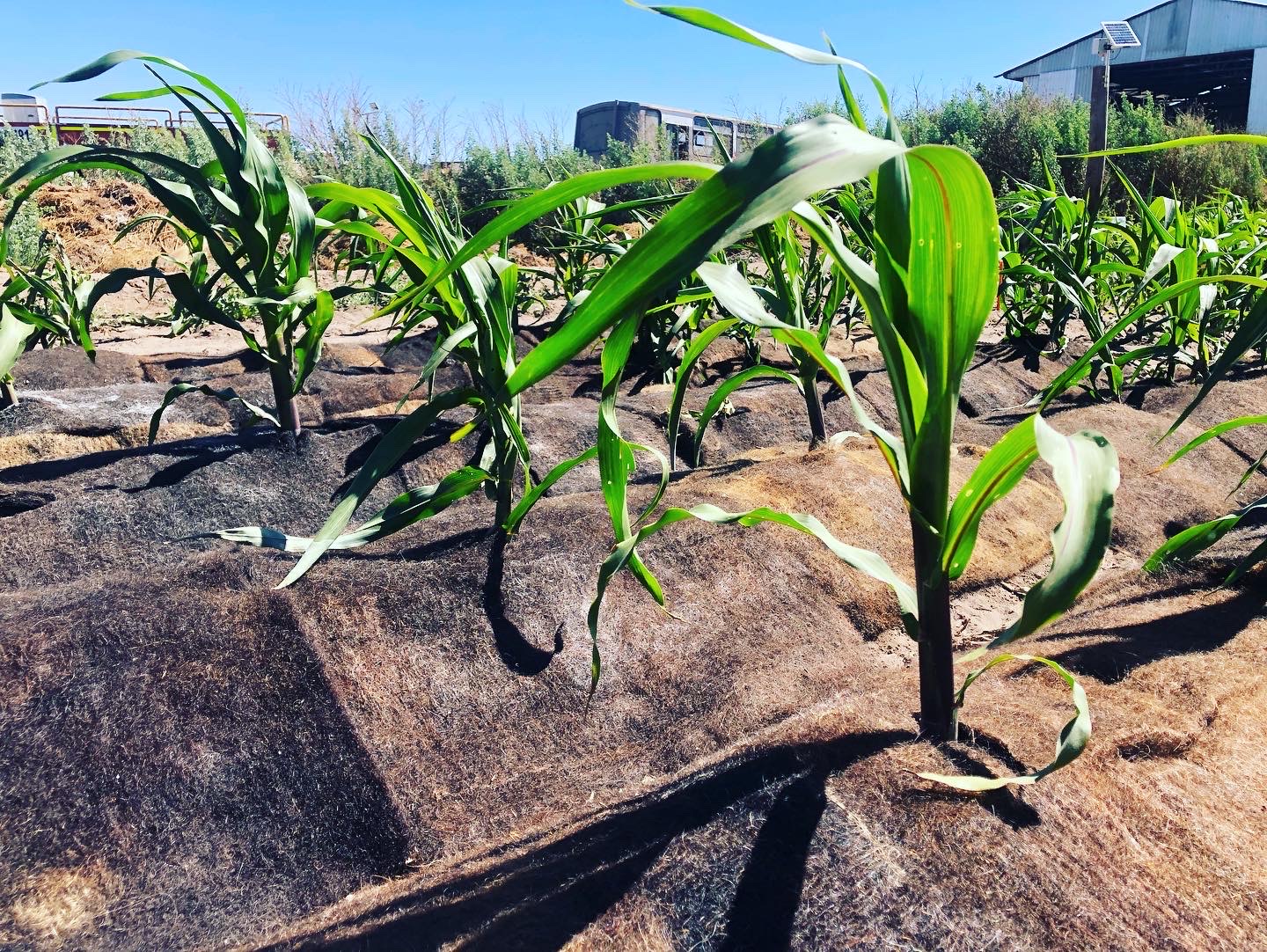
Making Hair Mats (4 Questions)
How do you manufacture hair mats?
Here are some YouTube videos on that:
Program Links:
http://matteroftrust.org/297/clean-wave-program
YouTube on How To Make A Boom – in an emergency, hundreds of volunteers can easily stuff thousands of booms and boom, wattle or “sandbag” with walls of boom to protect a beach or ecosystem.
Here are some more:
• How To Do A Classroom Fake Oil Spill Demo
• YouTube on How Hair Collects Oil
• YouTube on Hair Boom Soaks Up Oil
How do you make hair booms?
We now usually make mats, roll them and tie with twine at the ends. You can also stuff large quantities of natural waste fiber (buffalo fleece, laundry lint, etc.) into recycled coffee bean burlap sacks. Plus, here’s a link for how to make them with recycled pantyhose: https://www.youtube.com/watch?v=aHuWyFVo62o
How can I buy hair mats?
Please contact us online to purchase hair mats. Prices vary based on size, application, and location.
Shoot us an email team@matteroftrust.org
How can I partner with Matter of Trust to start a Hair Matters satellite hair mat factory in my area?
Yes! We love partnering! The more satellite factories there are the better, as it reduces the carbon footprint associated with shipping fibers to faraway destinations. Shoot us an email at team@matteroftrust.org!
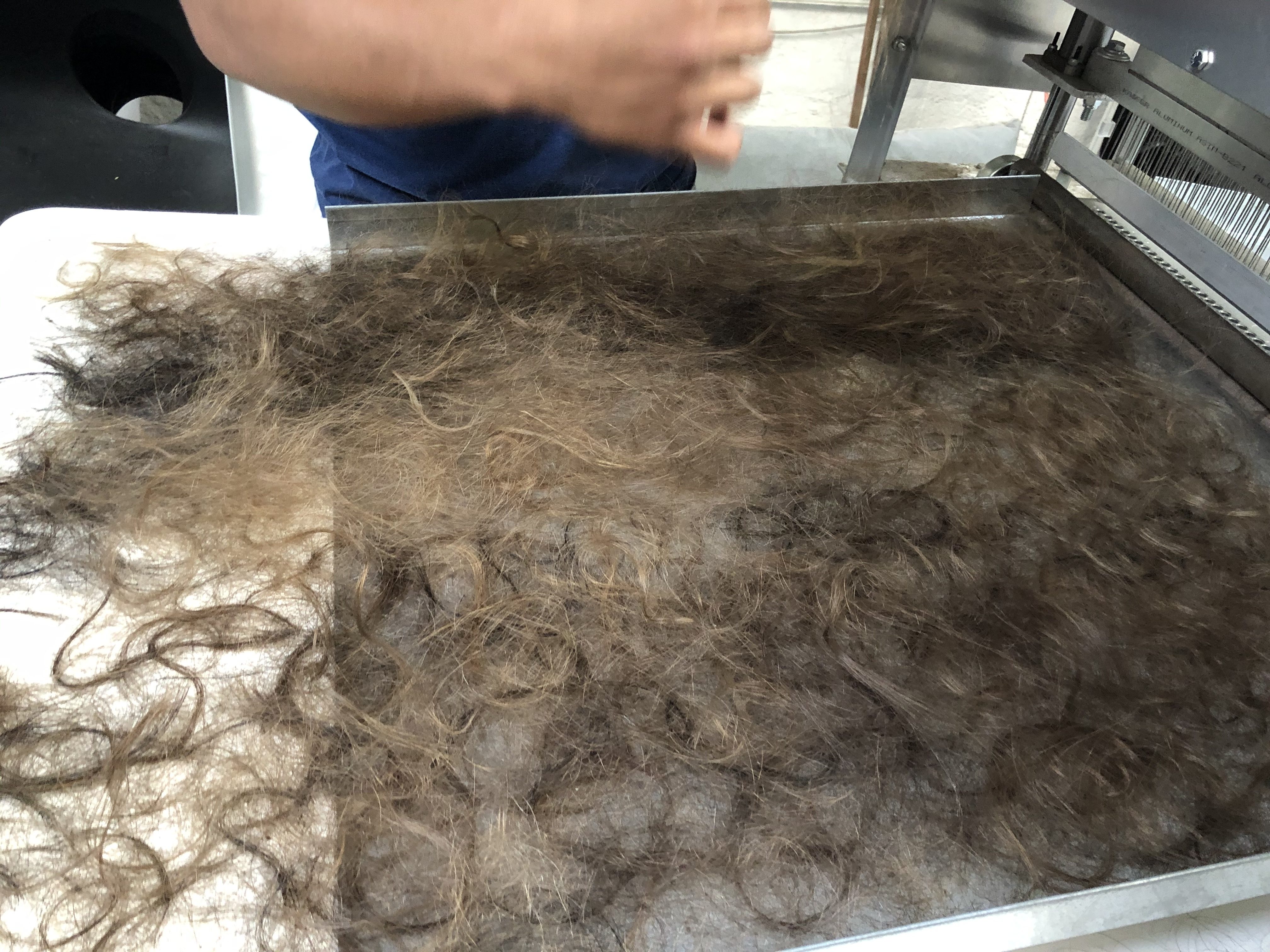
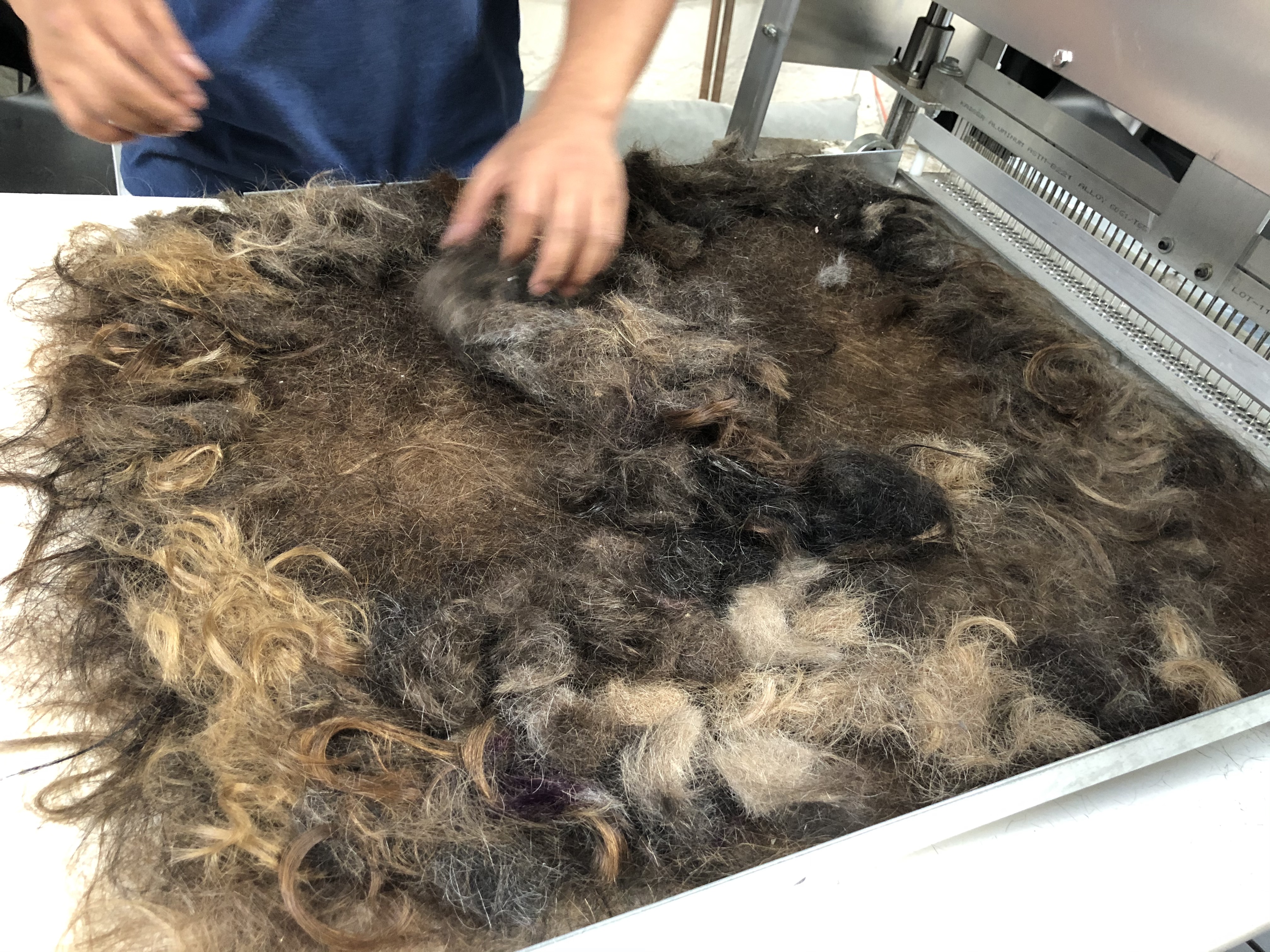
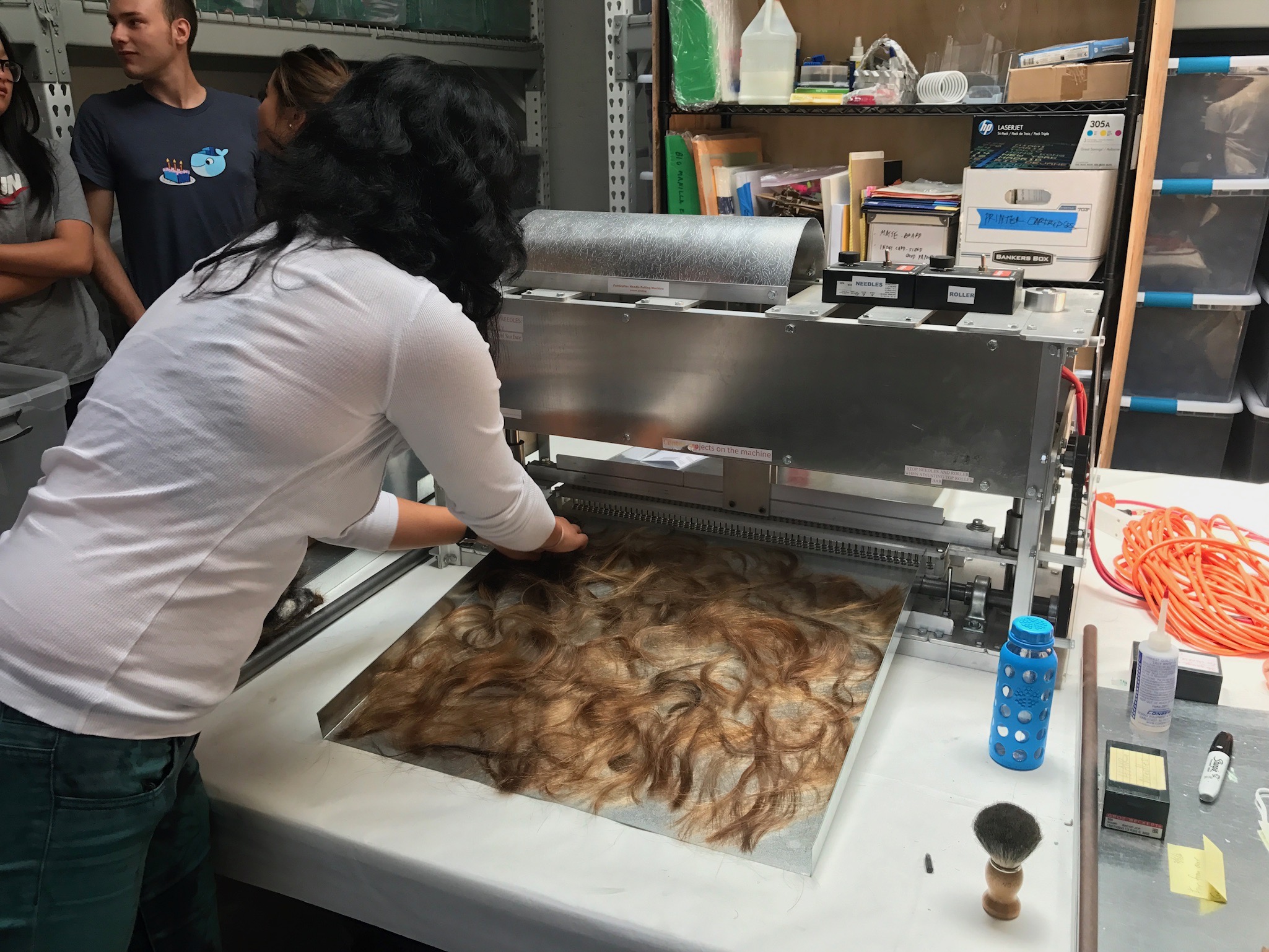
Helping Clean up Oil Spills (6 Questions)
What steps should I take in an oil spill that has occurred in my area?
We have set up a website called TheHumSum.org for donations and wishes for hair and supply donations. It’s free and anyone anywhere can use it. If you want us to, we will highlight your wishes on the homepage, our Facebook, etc. and with our international partners. Other steps we suggest taking are to:
- Try working with authorities and remember that they are very stressed and under a lot of pressure and don’t like this any more than you do. They may be afraid of lawsuits and public mobilizations may scare them.
- Find private places that do need public help – private beaches, docks etc. all of nature is connected and doesn’t know or care about what’s private and what’s public.
- Have the press show what is working – sometimes there can be lines on beaches – hair vs. no hair.
- Ask for help with containment materials. Nylons, tights, burlap sacks, crab bags, more ideas from local surplus – welcome any ideas. Aim for natural or reusable materials when possible.
- Get donations of tyvek suits and gloves – as many as you can. It’s a messy business.
- Set up separate tarps, bags or cans for disposing of the tyvek suits and gloves and nylons, tights, pool noodles or any floatation assistance, rope, burlap bags, crab bags…
- Keep the oily hair separate – it may be useful for legal reasons to take photos and to save for testing – and it can be (laboriously) composted or burned as a fuel source.
How quickly does oil need to be cleaned up once a spill has occurred?
Time is crucial when dilution is an issue – in an ocean, oil spreads fast. There are oil spills in the Amazon jungle that have been there for 25 years. In the US, and many other countries, companies are only required to show the best efforts to clean up 5% of a spill. (Meaning they don’t even have to clean up 5%, they just have to show that they tried their best.)
This is because oil spreads out fast and thin in water and it becomes near impossible to clean more than that %. 1 quart of oil can spread out rapidly over 2 acres of ocean. Heavy oil eventually sinks to the bottom of the sea. The high-pressure BP Deepwater Horizon rig had some light oil that shot up into the stratosphere. Oil can also wash up for days or collect into plumes that look like dark serpents following warmer streams within the ocean.
All this to say, the sooner you can start clean up the better!
How do environmental factors impact oil composition?
In cold water, oil can get hard and tar ball-like. It often washes up in silver dollar size blobs, which, when moist, are easy to dab up with hair mats or even by rolling booms along the sands (just make sure they have thick tights and not running nylons.) A lot of hair booms in burlap sacks will collect oil washing up and you don’t have to worry so much about the integrity of the nylons. The booms are quite dense and the surface area of the hair inside them attracts oil while allowing water to pass through. Mats however are more effective as wipers.
How do chemical dispersants change oil composition?
Oh, don’t get us started on dispersants. They create foams and all kinds of weirdness. Dispersants such as Corexit can be highly toxic. This is why we do not advise volunteers to directly clean up oil spills, but rather produce clean up materials and hand them over to professionals who have the safety equipment to handle harmful petrochemicals.
Do volunteers and cleanup crews have to be trained?
See our videos on booming. Each location has different needs for oil spill cleanup. Please feel free to contact us and we are always happy to connect and see if there’s any way we can help. Again, we strongly recommend volunteers focus on making clean up products, rather than directly interacting with the chemical spills.
What are some examples of ordinary and major oil spills that the Hair Matters Program has helped clean up?
There are over 2600 oil spills a year on average. We are concentrating on lining storm drains and keeping oil out of waterways.
Most famously for emergency oil spills, we helped respond to the San Francisco Cosco Busan and the Mexican Gulf Coast BP Deepwater Horizon. In addition, we’ve helped remotely with spills in Korea, France, Galapagos, Mauritius… and oil pits in the Amazon.
We mainly focus on smaller-scale oil spills. We work with the Air Force and municipalities on motor oil runoff into storm drains from runways and streets – 50% of all oil in our waterways comes from used motor oil drips. 1 quart of oil can contaminate 250,000 gallons of fresh water. Major oil spills in the press are actually a small percentage of the oil that harms the environment, but they’re useful for awareness! On average, 60 million gallons of oil bubbles up naturally from the seafloor under the ocean every year.
How are used hair mats disposed of?
In the US, local hazmat teams are usually legally responsible for all oil spill debris, and conventionally all the debris goes into landfills or is incinerated.
When it comes to oil spills, whether it’s a diaper that was left on the beach or a polypropylene boom or a shoe… when the press is watching, hazmat cleanup crews are much more vigilant. Eventually, the public gets what we call “oil spill story fatigue,” and when no one is looking, cleanup becomes sloppier.
Like the above, hair mats and booms can also be incinerated for energy. Because mats are just hair and oil, they reduce to minimal ash, which is better than other products. But all incineration should be done in a closed system that collects particulates and toxins. Also, landfilling can lead to leaks and water table contamination.
We have tested composting oily mats as well using fungi (mushrooms), thermophilic rows (green waste), and vermiculture (worms). It’s a labor of love, but doable. Ultimately, where mats end up is decided by the hazmat teams.
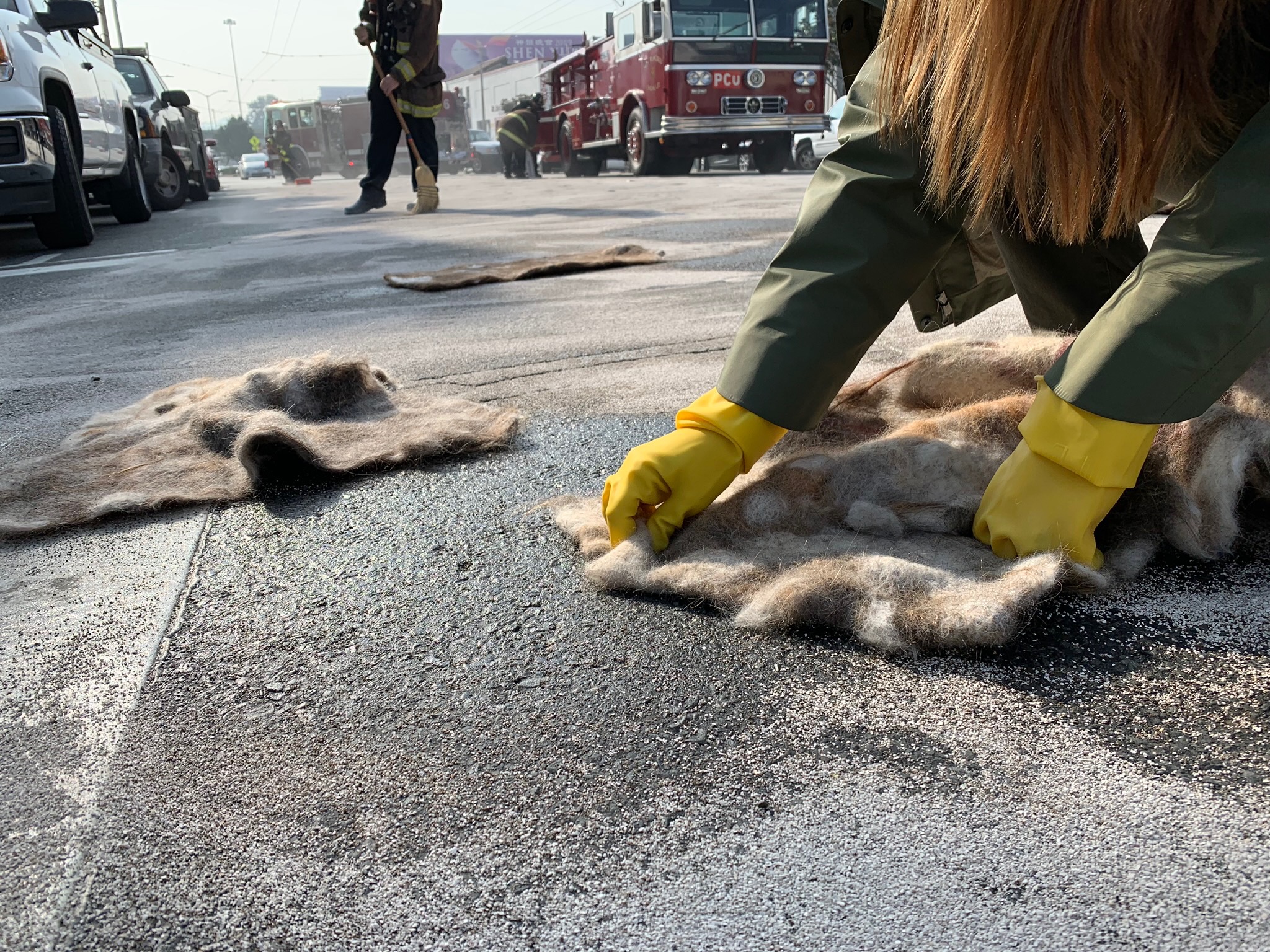
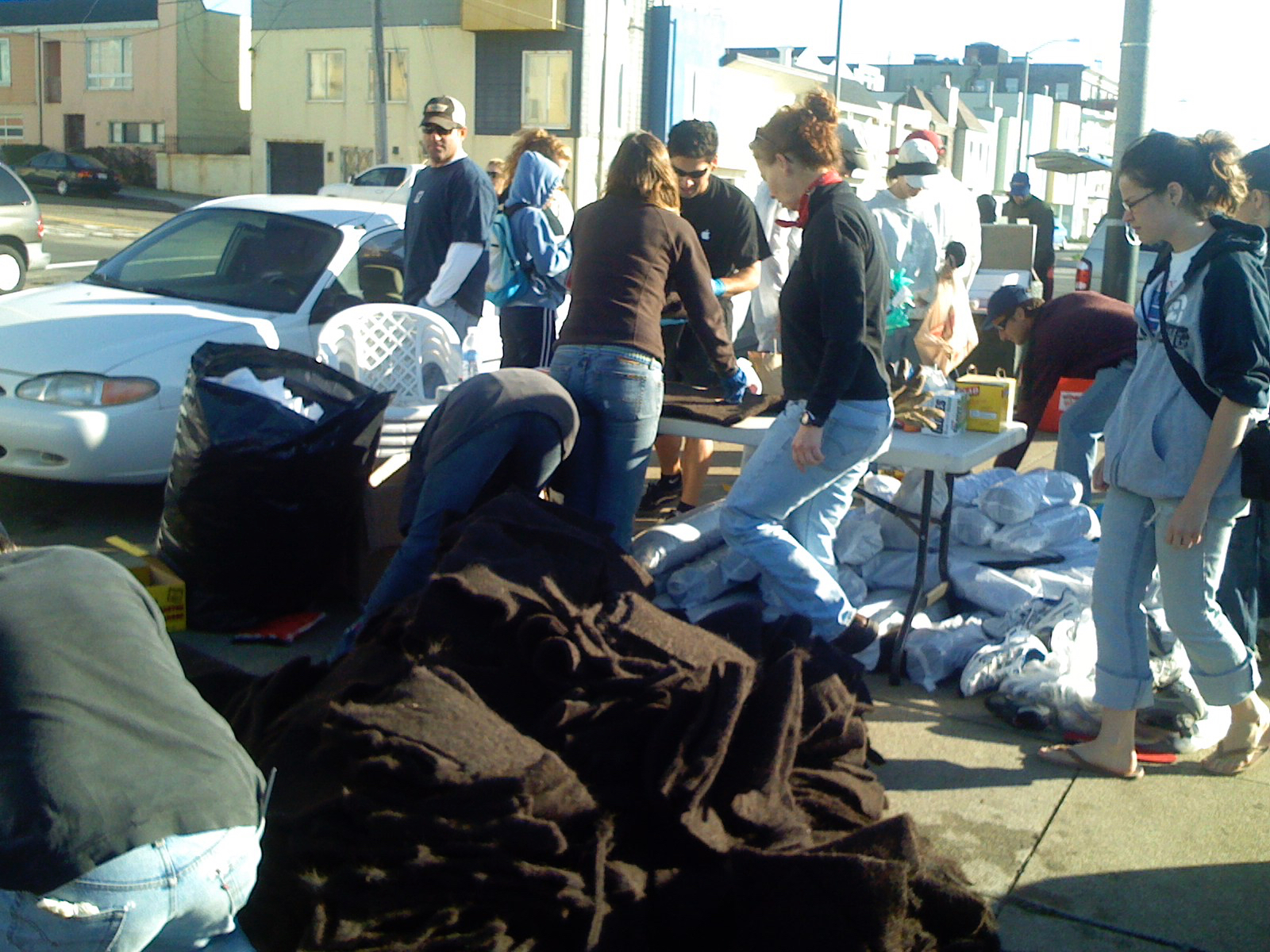
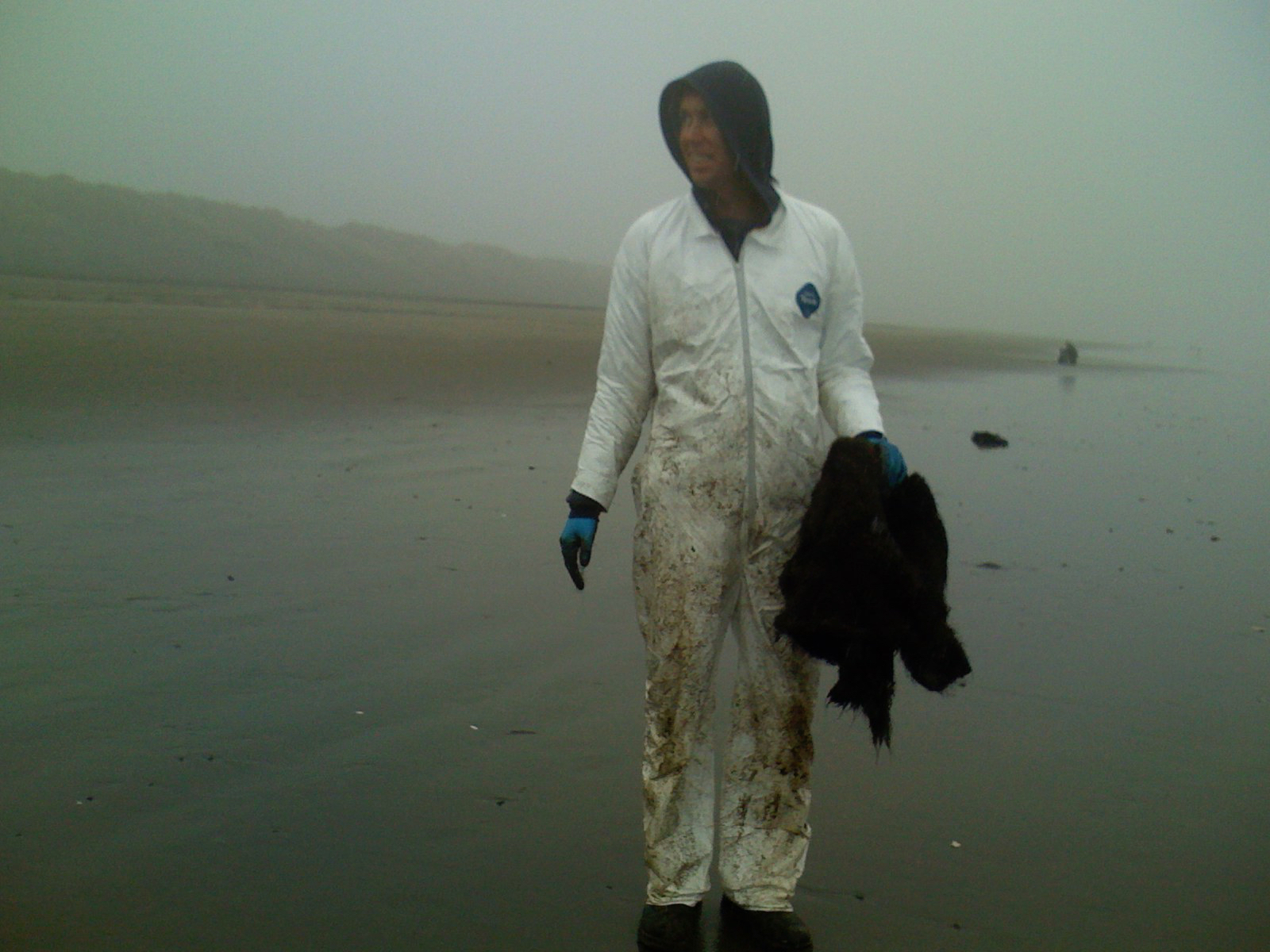
Exhibits + Research Hair Mats and Disposal (10 Questions)
Has the technique of using hair to clean up oil spills been tested by laboratories?
The fiber materials and the mats have been tested and were patented but are now free domain. You can test it yourself very easily – we do it in schools all the time. We’ve been working with the Army Corps of Engineers and the US Air Force since 2010, and we’ve been under contract with the US Air Force since 2019, for research and development toward natural fiber adsorbents for contaminated wastewater.
Here is a link to multiple research papers with regards to hair mats and booms: https://matteroftrust.org/research-resources/
How cost-effective is cleaning up oil spills with hair, when compared to other methods?
Hair mats are very cost-effective! When fibers and supplies are donated and people volunteer, it’s free.
We are working to create a model green business that can be replicated anywhere because the carbon footprint of shipping recycled hair clippings to the felting station and then back out to the spills or storm drains can quickly become large. There are hair salons and pet groomers everywhere, so fiber should be processed and used locally.
We are open-sourcing all of the information, budgets, challenges, successes – the whole thing – and will be setting up a starter loan fund as well. It doesn’t make sense to drill oil to use oil to make oil-based products to clean up oil spills. That cycle only makes sense to oil companies. To the rest of us, growing the renewable resource solution in front of our eyes – natural fibers are the best answer.
What is the adsorbent weight ratio of hair booms vs. synthetic? (ex: how much oil can 1LB of hair adsorb/soak up compared to synthetic?)
Hair is faster than the synthetic booms we have tested. Synthetic booms eventually soak up as much. We feel that oil spills need to be cleaned fast and by communities because dilution is a big deal. We have a comparison video on this. Hair booms don’t float as well as synthetic booms. However, they both soak oil equally well. Hair mats do float as well – that research is coming out later this year. The synthetic booms do float but abandoned booms break apart fast and the synthetic fibers can be swallowed by sea life.
1 pound of hair soaks up 1 liter of oil in 1 minute (but can be done faster if manipulated in the oil).
Does the effectiveness of hair mats/booms depend on the type of oil that has been spilled? How does hair react to soaking up lighter and heavier oils (different viscosities)?
Bunker fuel is heavy – and dries into tarballs. Jet fuel is very light. Gasoline and used motor oil are midrange. There is dirt and sand and life in water so booms will get weighed down even though oil and hair both naturally float. So removing oily hair booms quickly and adding floating assistance is key, but the hair is able to effectively absorb any kind of oil.
Do you have any interesting statistics/data about oil spills that you could share?
According to the USPS we received donations from every zip code in America and 30 other countries during the BP oil spill in 2010. We also got 3/4 of a million pounds of waste fiber donations over a 4-day period of the exceptional press coverage, including truckloads of buffalo fleece (April being fleecing season).
EPA letter to Phil McCrory Oil Spill Hair Mat inventor:
We’re currently concentrating on storm drains because 50% of oil spills that contaminate our waterways comes from used motor oil drops on our roadways being washed by rain into storm drains. Big flashy newsworthy oil spills are actually a small percentage of the problem, but they’re sexier and help with awareness. Storm drains don’t excite everyone as much as they do us 🙂 The great thing about storm drains is that they are in every municipality and can use 3 mats per drain per year they help collect leaves and twigs as well so less clogs. It’s a great local green business. We are currently setting up a model one for field trips in San Francisco city center in order to promote this to visiting conventions. SF gets 16 million tourists a year so we hope to get a lot of great ideas, feedback and expansion from this. Come and visit our Eco Hub!
Can used hair mats be composted?
Our organization has successfully demonstrated the remediation of bunker fuel oiled mats during an 18 month program from 2007-2009 by combining the use of fungal and bacterial inoculates, thermophilic composting, and vermicomposting.
This remediation process, though successful, was costly in time, labor, and space. We have learned that we can cut labor costs significantly by incorporating ventilation tubes into the compost pile. Additionally, the oily hair mats must be free of all dispersants, like Corexit (a chemical used by oil companies to break up the oil and make it sink. Corexit turned out to be an endocrine disrupter and toxic for volunteers).
Learn more here.
How are used hair mats disposed of?
In the US, local hazmat teams are usually legally responsible for all oil spill debris, and conventionally all the debris goes into landfills or is incinerated.
When it comes to oil spills, whether it’s a diaper that was left on the beach or a polypropylene boom or a shoe… when the press is watching, hazmat cleanup crews are much more vigilant. Eventually, the public gets what we call “oil spill story fatigue,” and when no one is looking, cleanup becomes sloppier.
Like the above, hair mats and booms can also be incinerated for energy. Because mats are just hair and oil, they reduce to minimal ash, which is better than other products. But all incineration should be done in a closed system that collects particulates and toxins. Also, landfilling can lead to leaks and water table contamination.
We have tested composting oily mats as well using fungi (mushrooms), thermophilic rows (green waste), and vermiculture (worms). It’s a labor of love, but doable. Ultimately, where mats end up is decided by the hazmat teams.
Can used hair mats be wrung out and reused?
Although hair mats and booms are strong and can be wrung out, they’re better for one use because they get so much dirt, sand, seaweed etc. stuck in them and it becomes a messy and unnecessary business to try and reuse them. Also, like any towel or sponge, they become a little less efficient than the first time use. Hair is a renewable resource and you can usually make more than enough mats and booms.
Does hair float?
Yes, hair floats – that is why it is the last to go down your shower drain and sometimes blocks up the pipes. Hair mats are designed to float, while hair booms are also designed to stack and protect beaches. Oil and hair both float, but dirt and seaweed can weigh booms down.
Ideally, adsorbent oil spill cleanup materials are not left for days on end but are retrieved quickly. Remember, ships are made of steel so even steel floats when it is in the right shape.
Are hair mats safe for the environment?
Yes! Hair mats are non-toxic to the environment, unlike petroleum based synthetics. Oil companies drill and use oil to make synthetic products that clean up oil spills. We are offering an efficient, renewable, and natural alternative to that silly cycle.
While hair mats and hair booms shed, this shedding is minimal compared to the toxins leached by abandoned synthetic booms.
Hair mats are safe for the environment!

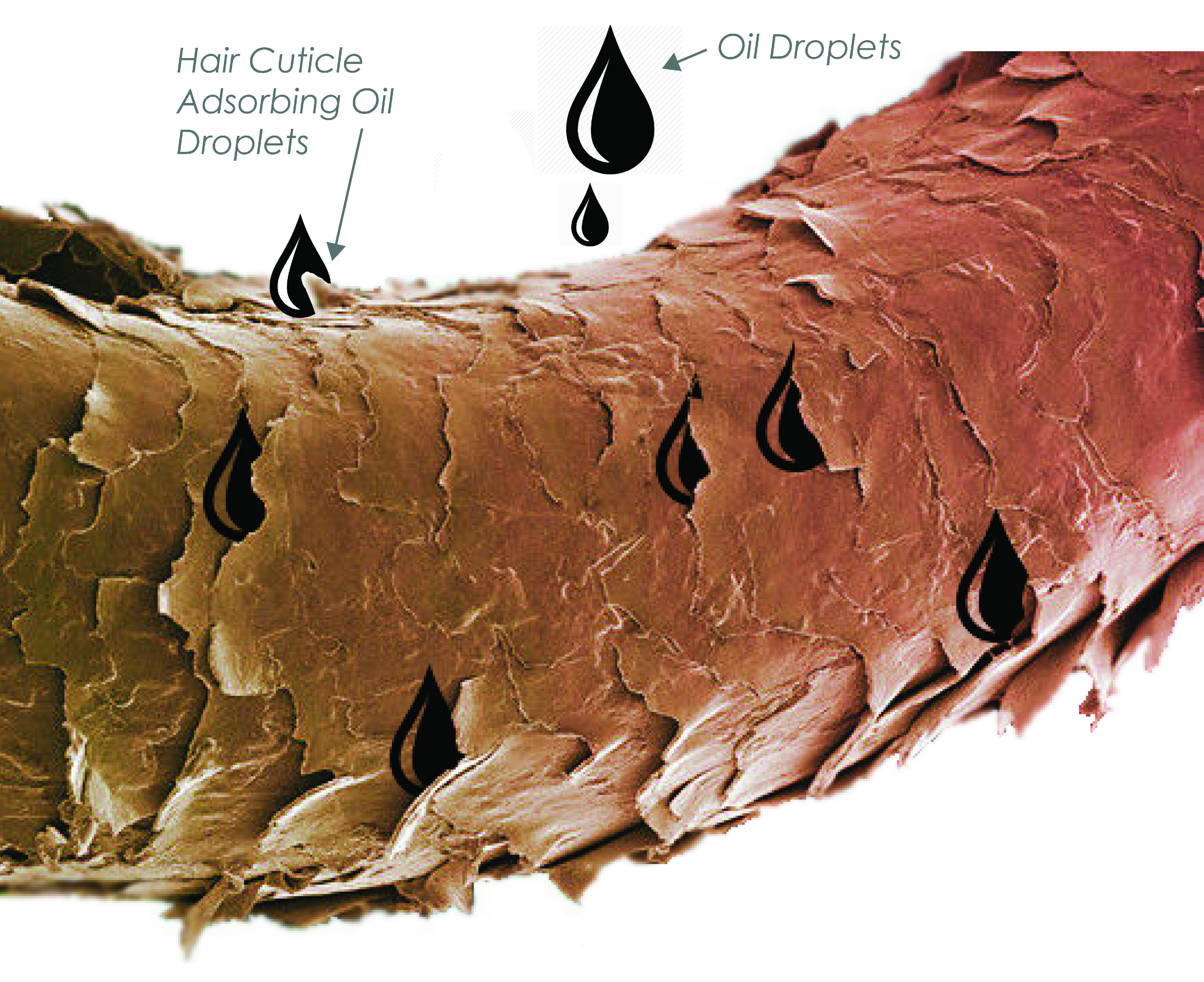
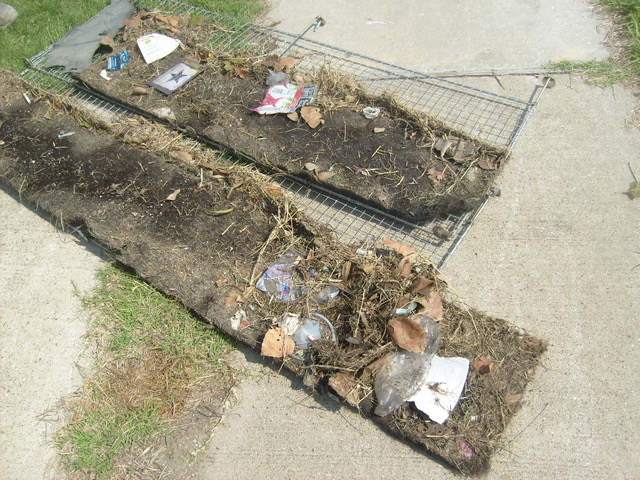
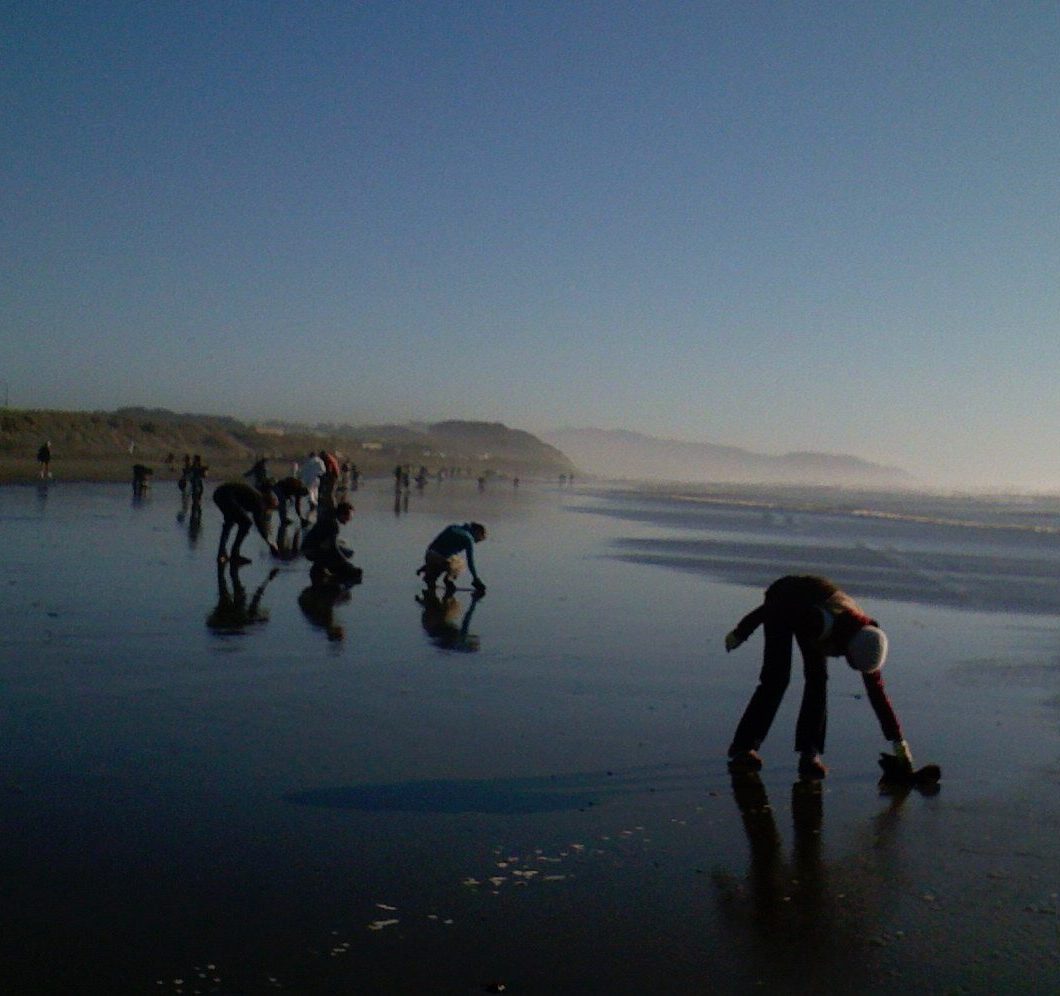
Volunteers use Matter of Trust hair mats to clean up the oil spilt on Ocean Beach in San Francisco.
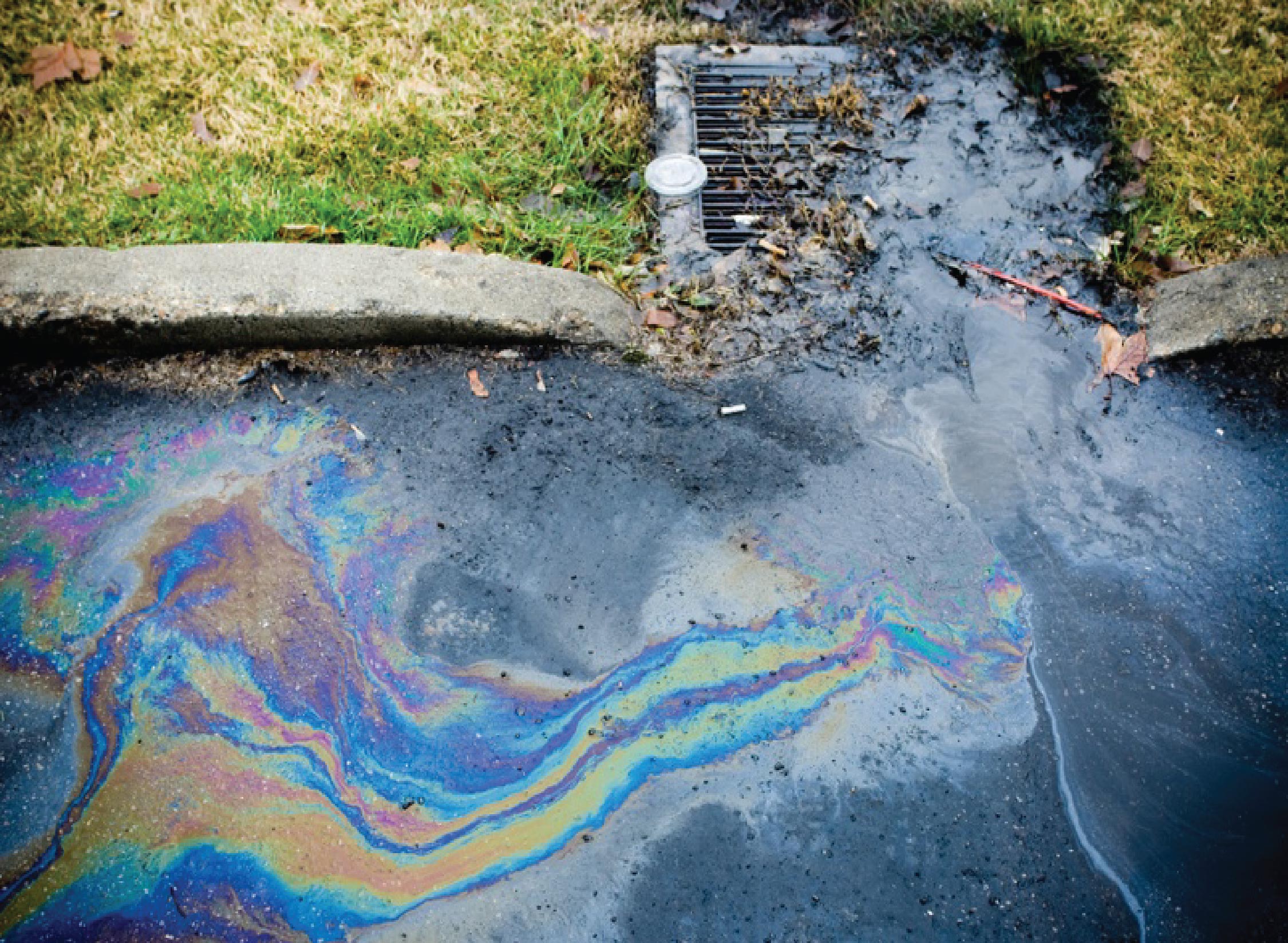
Oil mixing with water and heading into a storm drain.
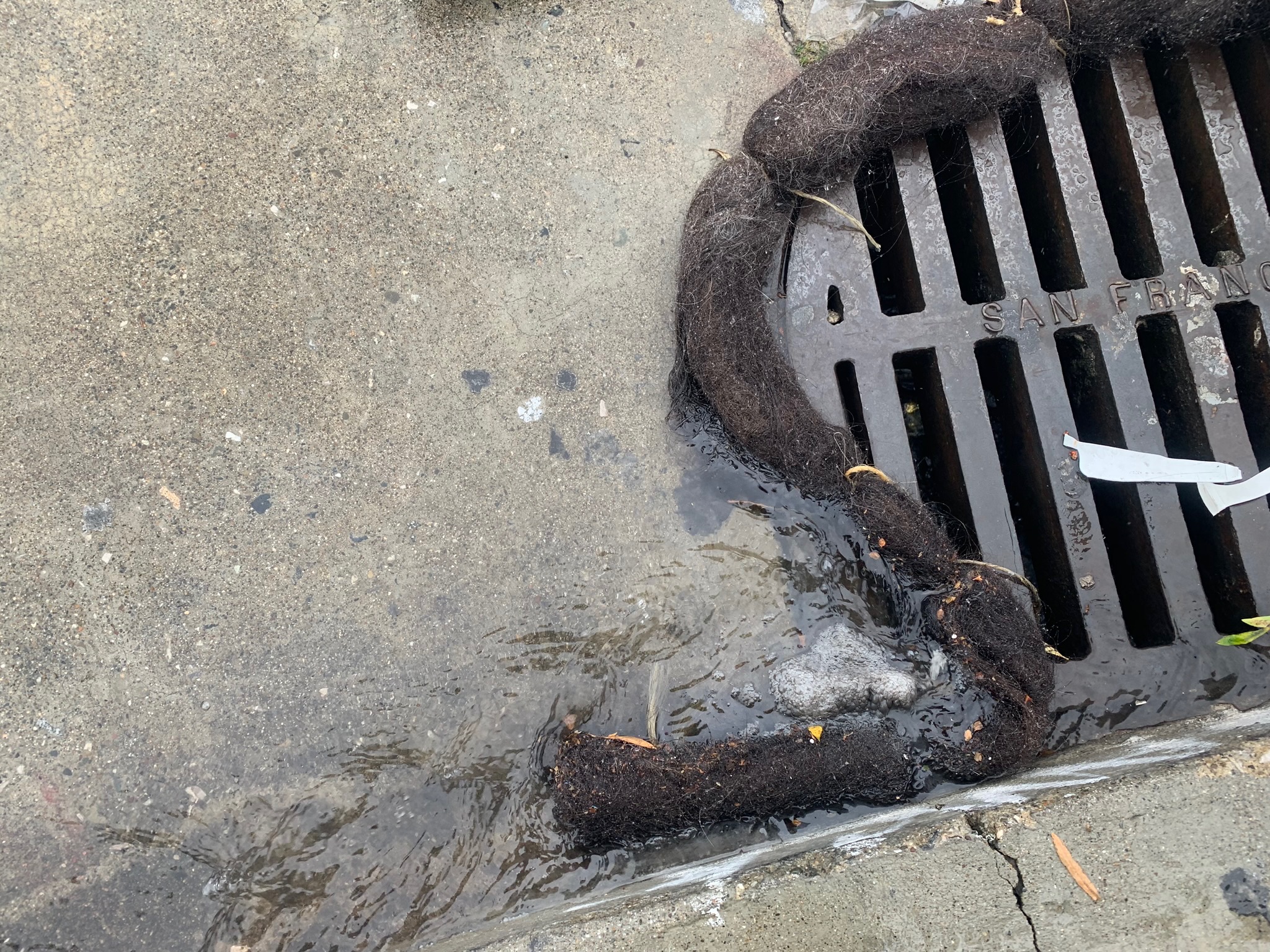
Hair Boom outlining round storm drain, sucessfully filtering the oil and other debris from water.
